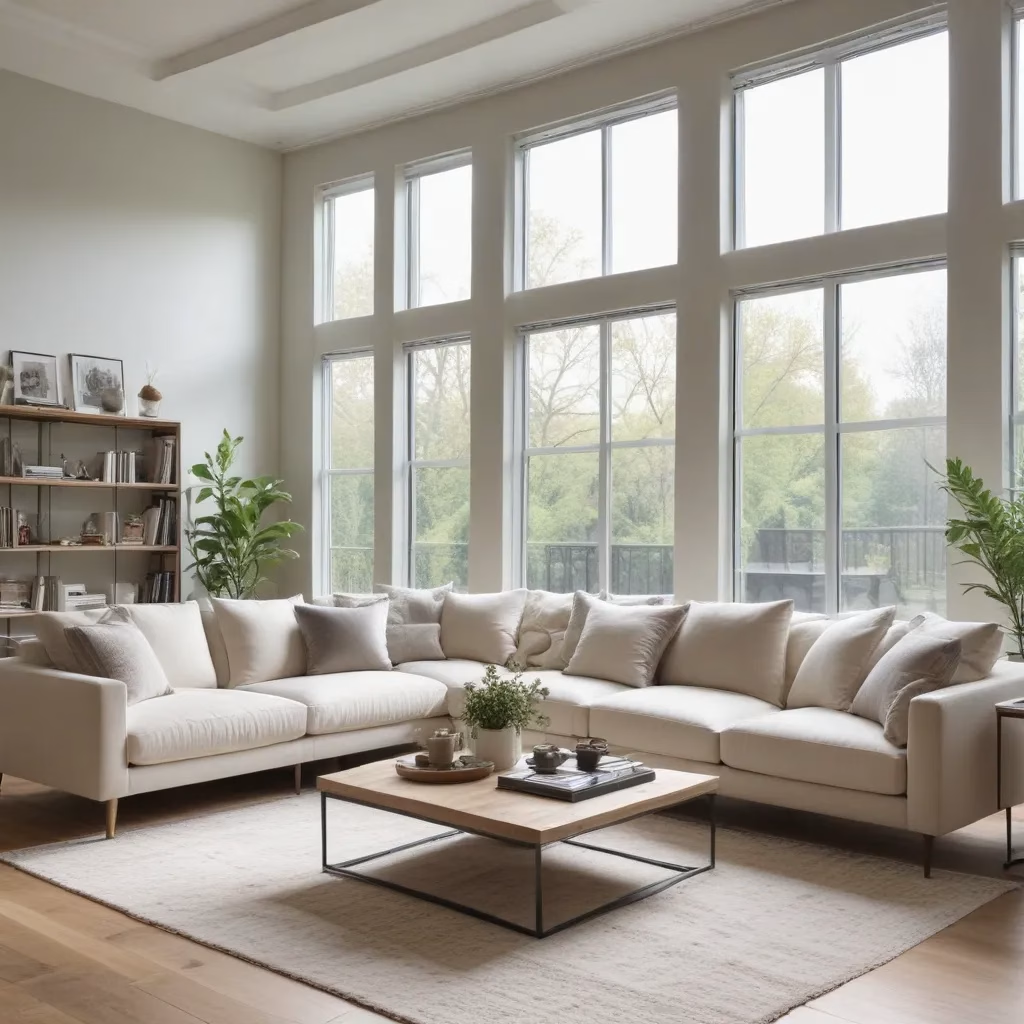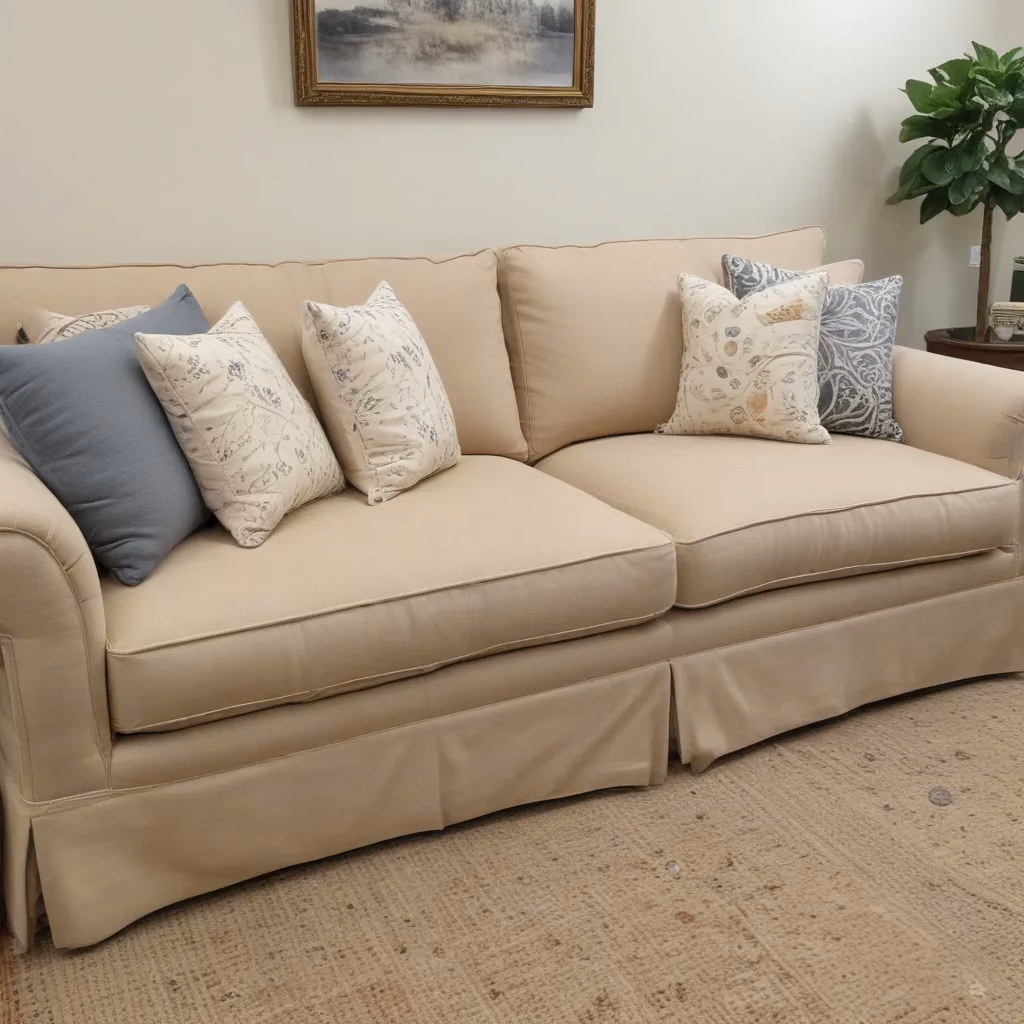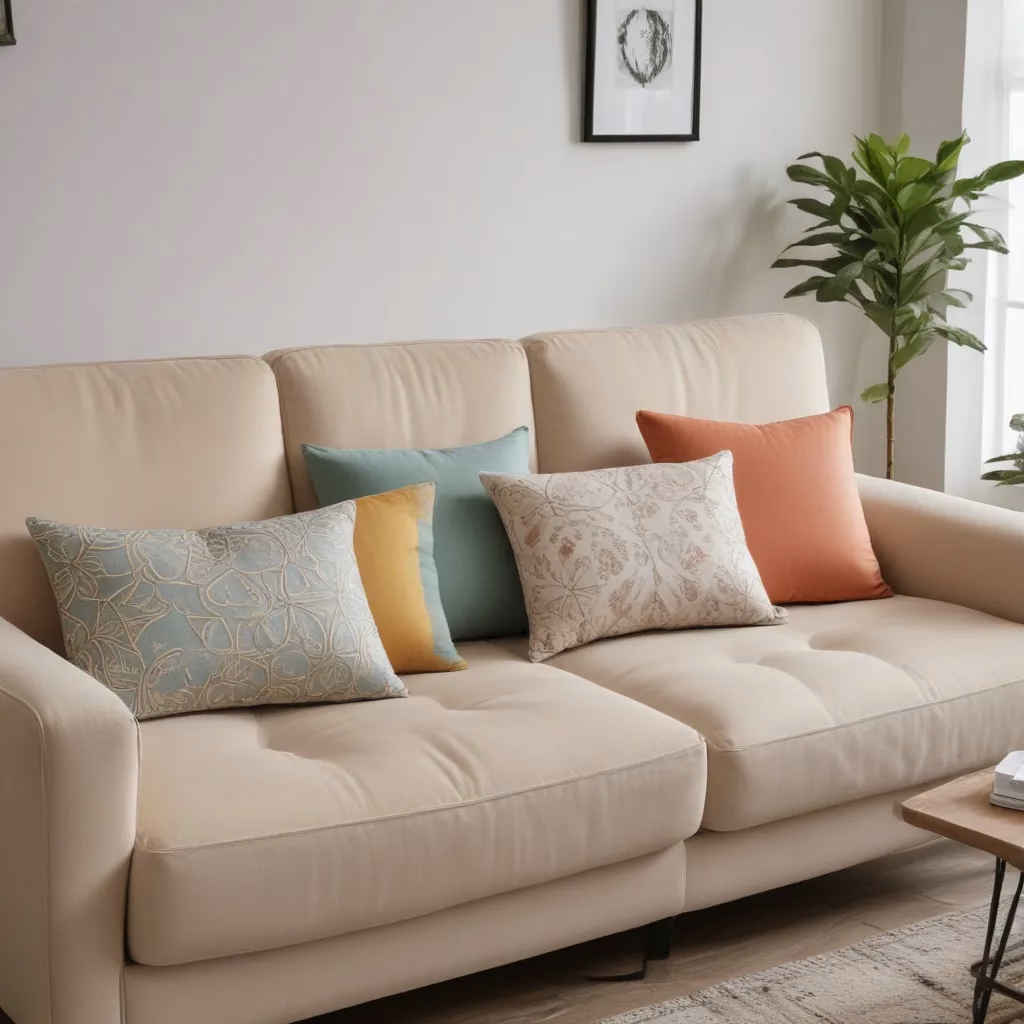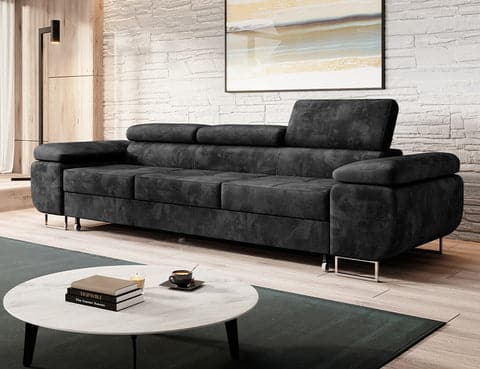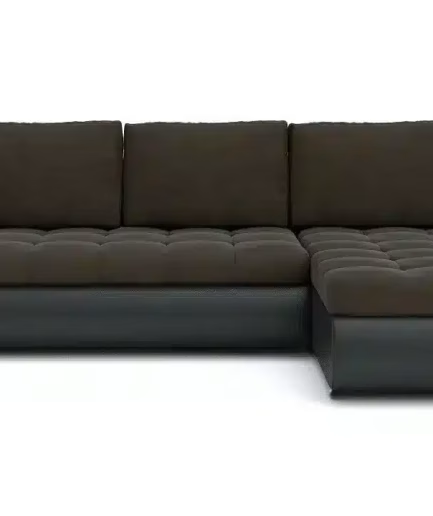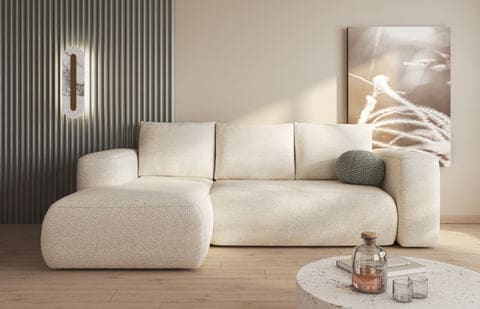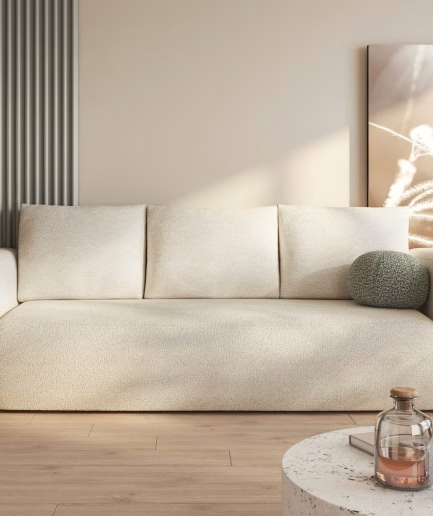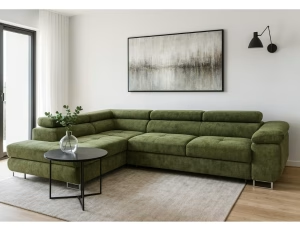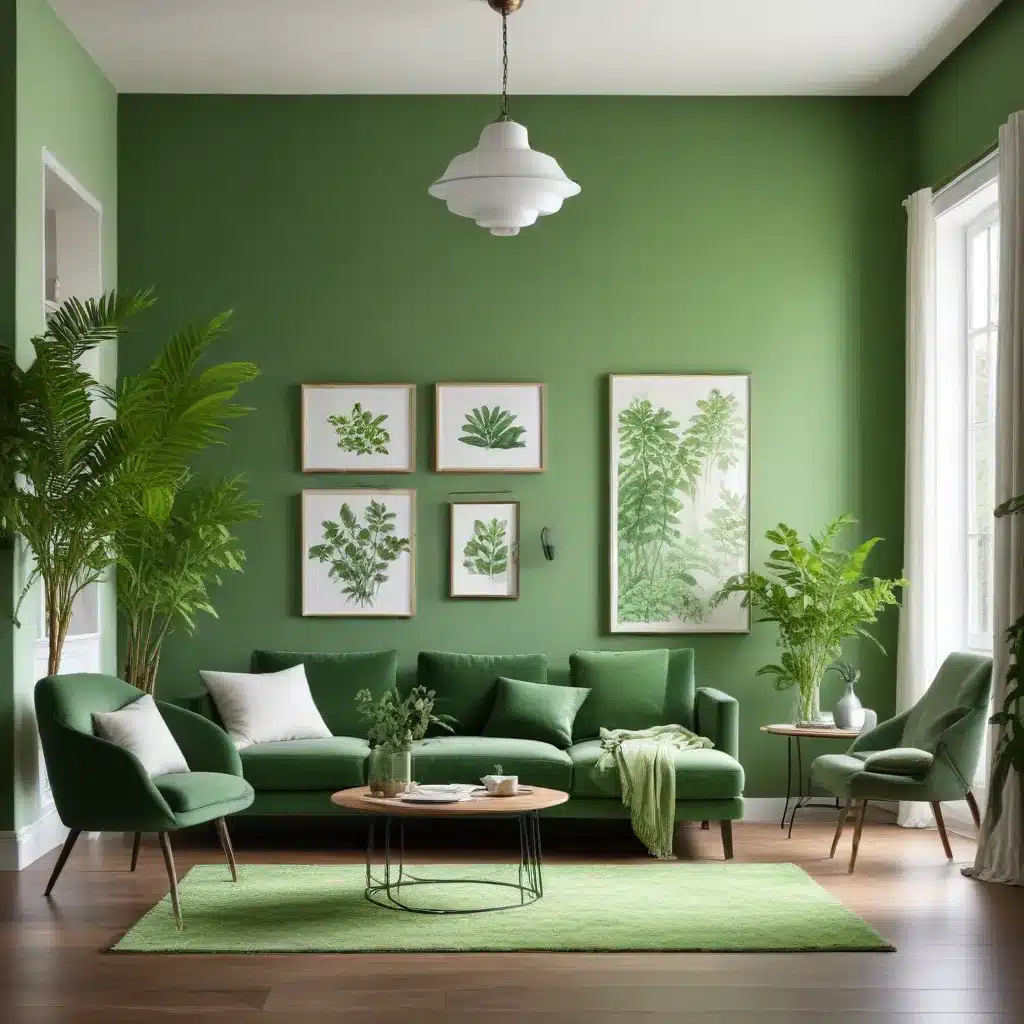
The Rise of Green in UK Home Decor
In recent years, the UK home decor landscape has seen a significant shift towards incorporating more natural elements into interior spaces. One colour that has emerged as a frontrunner in this trend is green. No longer confined to accent pieces or outdoor spaces, green has taken centre stage as a versatile neutral that can transform any room.
The appeal of green lies in its ability to create a sense of calm and connection to nature within our homes. As urban living becomes increasingly common and many Britons find themselves spending more time indoors, the desire to bring elements of the outdoors inside has grown stronger. Green, in all its varied shades, offers a refreshing alternative to traditional neutrals like beige, grey, or white.
This shift towards green is not just about aesthetics; it’s a reflection of a broader cultural movement towards sustainability and well-being. By incorporating green into our living spaces, we create environments that feel more natural, relaxing, and conducive to both physical and mental health. Whether it’s through paint, furniture, or accessories, green has proven to be a transformative colour that can suit a wide range of interior styles.
Understanding Green as a Neutral
When we think of neutral colours, shades like beige, grey, and white typically come to mind. However, green has emerged as a surprising contender in the neutral category. But how can a colour associated with lush forests and vibrant plant life be considered neutral?
The key lies in understanding that neutrals are not defined by their lack of colour, but by their ability to complement and enhance other elements in a space. Green, particularly in its softer and more muted tones, has demonstrated a remarkable capacity to work harmoniously with a wide range of colours and design styles.
In nature, green acts as a backdrop for an endless variety of colours and textures. This same principle applies to interior design. From soft sage to deep olive, green hues can create a soothing foundation that allows other colours and design elements to shine. Unlike stark whites or cool greys, green adds depth and character to a space while maintaining a sense of balance and tranquility.
Consider the following table comparing traditional neutrals with green:
| Characteristic | Traditional Neutrals (Beige, Grey, White) | Green as a Neutral |
|---|---|---|
| Versatility | High | High |
| Calming Effect | Moderate | High |
| Natural Feel | Low to Moderate | High |
| Depth | Low to Moderate | Moderate to High |
| Complementary | Works with most colours | Enhances most colours |
As we can see, green offers many of the same benefits as traditional neutrals while providing additional advantages in terms of creating a calming, natural atmosphere.
Choosing the Right Shade of Green for Your Space
Selecting the perfect shade of green for your interior can seem daunting given the vast array of options available. The key is to consider the existing elements in your space, the amount of natural light, and the mood you want to create.
For larger spaces or rooms with plenty of natural light, deeper shades of green can add richness and depth without overwhelming the space. Forest greens or emerald tones can create a luxurious feel, especially when paired with natural wood tones or metallic accents.
In smaller rooms or areas with limited natural light, lighter shades of green can help to open up the space and create an airy feel. Sage, mint, or seafoam greens are excellent choices for these environments. These softer hues can make a room feel larger and more inviting while still providing the benefits of bringing nature indoors.
When selecting green for your walls or larger furniture pieces, it’s important to test samples in your space at different times of day. The appearance of green can change dramatically depending on lighting conditions. What looks perfect in bright daylight might appear too dark or intense in the evening under artificial lighting.
Here’s a guide to help you choose the right green for different rooms:
| Room | Recommended Green Shades | Benefits |
|---|---|---|
| Living Room | Sage, Olive, Forest | Creates a cosy, welcoming atmosphere |
| Bedroom | Mint, Seafoam, Moss | Promotes relaxation and restful sleep |
| Kitchen | Apple, Lime, Emerald | Energizes the space and complements food colours |
| Home Office | Hunter, Evergreen, Jade | Enhances focus and reduces eye strain |
| Bathroom | Aqua, Teal, Celadon | Adds a spa-like feel and sense of cleanliness |
Remember, these are just guidelines. The best shade of green for your space is ultimately the one that resonates with your personal style and makes you feel at home.
Incorporating Green Through Furniture and Accessories
While painting walls is a popular way to introduce green into a space, it’s not the only option. For those who prefer a more subtle approach or are renting and unable to make permanent changes, furniture and accessories offer excellent alternatives for bringing green into your home.
Sofas and Armchairs
A green sofa or armchair can serve as a striking focal point in a living room or study. When choosing upholstery, consider the following factors:
- Fabric type: Velvet and wool offer rich textures and deep colours, while linen and cotton provide a more casual, lived-in look.
- Shade: Darker greens like forest or emerald create a sense of luxury, while lighter shades like sage or mint keep the space feeling open and airy.
- Style: Traditional button-tufted Chesterfields in deep green exude elegance, while mid-century modern shapes in brighter greens add a fun, retro touch.
Accent Pieces
For a more flexible approach to incorporating green, consider smaller accent pieces:
- Cushions and throws: These are an easy and affordable way to add pops of green to existing furniture.
- Rugs: A green rug can anchor a room and tie different elements together.
- Curtains or blinds: Green window treatments can frame views and add a natural touch to any room.
Natural Elements
To truly bring the outdoors in, incorporate natural green elements:
- Houseplants: From small succulents to large statement plants, greenery adds life and improves air quality.
- Botanical prints: Artwork featuring leaves, ferns, or other plants can add visual interest and reinforce the nature-inspired theme.
Tableware and Decorative Objects
For those who prefer to start small, consider:
- Green glassware or ceramics: These can add subtle touches of colour to dining tables or shelves.
- Vases and planters: Even without plants, these objects can introduce green accents to various spaces.
By thoughtfully selecting green furniture and accessories, you can create a cohesive, nature-inspired look that enhances the overall feel of your home. Remember to balance green elements with other colours and textures to avoid overwhelming the space.
The Psychology of Green in Interior Design
The choice of colour in our living spaces goes beyond mere aesthetics; it can significantly impact our mood, behaviour, and overall well-being. Green, in particular, holds a special place in colour psychology due to its strong associations with nature and its calming properties.
Emotional and Psychological Effects
Green is often associated with the following emotional and psychological effects:
- Relaxation: The colour green has been shown to help reduce stress and promote a sense of calm.
- Balance: Green is perceived as a balanced, harmonious colour, helping to create a sense of stability in a space.
- Renewal: As the colour most associated with nature, green evokes feelings of growth, renewal, and vitality.
- Concentration: Some studies suggest that green can enhance reading ability and comprehension, making it an excellent choice for home offices or study areas.
Physiological Responses
Beyond its psychological impact, green can elicit certain physiological responses:
- Reduced eye strain: Green is considered one of the most restful colours for the human eye, potentially reducing eye fatigue.
- Improved sleep: Softer shades of green in bedrooms may contribute to better sleep quality due to their calming effect.
- Lower blood pressure: Exposure to green environments, even in indoor settings, has been linked to lower blood pressure and heart rate.
Creating Balance with Green
While green offers numerous benefits, it’s essential to use it thoughtfully in interior design:
- Vary shades and tones: Using different shades of green can create depth and interest without overwhelming the space.
- Balance with neutrals: Pairing green with neutral colours like white, beige, or grey can help create a harmonious and balanced look.
- Introduce through natural elements: Incorporating green through plants or natural materials like wood can enhance the connection to nature.
Understanding the psychological impact of green can help homeowners make informed decisions about how to incorporate this versatile colour into their living spaces. By doing so, they can create environments that not only look beautiful but also promote well-being and a connection to the natural world.
Pairing Green with Other Colours
One of the reasons green has become such a popular choice in interior design is its remarkable versatility when it comes to colour pairings. Whether you’re looking to create a bold statement or a subtle, harmonious backdrop, green can work beautifully with a wide range of colours.
Classic Combinations
Some timeless colour pairings with green include:
- Green and White: This crisp combination creates a fresh, clean look that’s perfect for kitchens and bathrooms.
- Green and Brown: Reminiscent of forest floors, this pairing brings warmth and a strong connection to nature.
- Green and Blue: These cool tones work together to create a calming, spa-like atmosphere.
Contemporary Pairings
For those looking to create more modern or unexpected colour schemes:
- Green and Pink: Soft pinks paired with sage or mint greens create a fresh, youthful look.
- Green and Yellow: This vibrant combination can energize a space and evoke feelings of springtime.
- Green and Grey: A sophisticated pairing that works well in both traditional and contemporary settings.
Monochromatic Schemes
Using various shades of green together can create depth and interest:
- Combine light, medium, and dark greens for a layered look.
- Mix warm and cool green tones to add complexity to the colour scheme.
Accent Colours
When using green as a neutral base, consider these accent colours:
- Gold or Brass: Metallic accents add warmth and luxury to green interiors.
- Coral or Terracotta: These warm hues complement green beautifully, creating a balanced and inviting atmosphere.
- Deep Purple: For a rich, regal look, pair deep greens with eggplant or plum shades.
Here’s a quick reference guide for colour pairings:
| Green Shade | Complementary Colours | Accent Colours |
|---|---|---|
| Sage | Cream, Taupe, Blush Pink | Terracotta, Navy |
| Emerald | White, Black, Gold | Ruby Red, Sapphire Blue |
| Olive | Grey, Mustard, Navy | Burnt Orange, Plum |
| Mint | White, Light Grey, Peach | Coral, Turquoise |
| Forest | Tan, Rust, Burgundy | Gold, Deep Purple |
Remember, these are just guidelines. The best colour combinations are often those that resonate with your personal style and the specific lighting and architecture of your space. Don’t be afraid to experiment with different combinations to find what works best for you.
Practical Tips for Maintaining Green Furniture
Incorporating green furniture into your home is an excellent way to embrace this trend, but it’s essential to know how to care for these pieces to ensure they remain beautiful for years to come. Different materials require different care approaches, so let’s explore some practical tips for maintaining various types of green furniture.
Fabric Upholstery
Many green sofas and armchairs are upholstered in fabric. Here’s how to keep them looking their best:
- Regular vacuuming: Use a soft brush attachment to remove dust and debris weekly.
- Spot cleaning: Address spills immediately with a clean, damp cloth. Avoid rubbing, which can spread the stain.
- Professional cleaning: Have your fabric upholstery professionally cleaned every 12-18 months.
- Rotation: Rotate cushions regularly to ensure even wear.
- Sunlight protection: Place fabric furniture away from direct sunlight to prevent fading.
Leather Upholstery
Green leather furniture requires different care:
- Dusting: Use a soft, dry cloth to remove dust weekly.
- Cleaning: Wipe with a slightly damp cloth every few months. Avoid water saturation.
- Conditioning: Apply a leather conditioner every 6-12 months to prevent cracking.
- Avoid heat: Keep leather furniture away from heat sources to prevent drying and cracking.
Painted Wood Furniture
For green painted wood pieces:
- Dusting: Use a microfiber cloth to dust regularly.
- Cleaning: Wipe with a slightly damp cloth and mild soap solution when needed.
- Avoid harsh chemicals: These can damage the paint finish.
- Touch-ups: Keep some matching paint for small touch-ups as needed.
Metal Furniture
Green metal furniture, such as dining chairs or side tables, requires these care steps:
- Dusting: Wipe with a soft, dry cloth regularly.
- Cleaning: Use a mild soap solution for deeper cleaning when necessary.
- Rust prevention: Keep metal furniture dry and use a rust-inhibiting spray in humid environments.
- Touch-ups: Address any chips in the paint promptly to prevent rust.
General Maintenance Tips
Regardless of the material, these tips apply to all green furniture:
- Read care labels: Always follow manufacturer-specific care instructions.
- Act quickly on spills: The faster you address a spill, the less likely it is to stain.
- Use coasters and placemats: Protect surfaces from water rings and heat damage.
- Avoid direct sunlight: All materials can fade over time with excessive sun exposure.
By following these care instructions, you can ensure that your green furniture remains a beautiful and lasting part of your home decor. Regular maintenance not only preserves the appearance of your furniture but also extends its lifespan, making your investment in green pieces even more worthwhile.
The Future of Green in UK Interior Design
As we look ahead, it’s clear that the trend of incorporating green into UK homes is not just a passing fad, but a shift towards more nature-inspired, sustainable living spaces. This movement is likely to evolve and expand in several key ways:
Sustainable Materials
The focus on green is extending beyond colour to encompass eco-friendly materials and production methods. We can expect to see:
- Increased use of recycled and upcycled materials in furniture and decor
- Growing popularity of natural, biodegradable fabrics like organic cotton, hemp, and bamboo
- Emphasis on locally-sourced materials to reduce carbon footprint
Biophilic Design
The principle of biophilic design, which seeks to connect building occupants more closely to nature, is gaining traction. This approach goes beyond simply using the colour green to actually incorporating natural elements into interior spaces:
- Living walls and vertical gardens in both residential and commercial spaces
- Increased use of natural light and ventilation in architectural design
- Integration of water features and natural textures in interior spaces
Smart, Sustainable Technology
As technology advances, we’re likely to see more integration of smart, eco-friendly solutions in green-themed interiors:
- Energy-efficient lighting systems that mimic natural light cycles
- Smart thermostats and HVAC systems that optimize energy use
- Air-purifying technologies integrated into furniture and decor
Customisation and Personalisation
The future of green interiors will likely see more customisation options:
- Advanced digital printing technologies allowing for personalised green patterns and shades on various surfaces
- Modular furniture systems in green hues that can be adapted to changing needs
- Interactive design tools that help homeowners visualise different shades of green in their spaces before committing
Health and Wellness Focus
As awareness of the health benefits of green spaces grows, we can expect to see:
- More emphasis on creating restorative, green-themed spaces within homes
- Integration of air-purifying plants as essential elements of interior design
- Use of non-toxic, low-VOC green paints and finishes
Evolving Colour Palettes
While green will remain a key player, we’re likely to see it combined with new and exciting colour palettes:
- Earthy, warm tones paired with various shades of green for a grounded, natural feel
- Bold, contrasting colours used alongside green for dramatic effect
- Subtle, tonal variations of green used to create depth and interest
As these trends evolve, it’s important for homeowners and interior designers to stay informed and adaptable. The key will be finding ways to incorporate these new ideas while still maintaining a timeless, personal style that reflects individual tastes and needs.
The future of green in UK interior design looks bright and varied, offering exciting possibilities for creating homes that are not only beautiful but also healthier, more sustainable, and more connected to nature. As we continue to spend significant time in our homes, the importance of creating spaces that promote well-being and environmental consciousness will only grow.
Conclusion: Embracing Green for a Natural, Balanced Home
As we’ve explored throughout this article, the adoption of green as a new neutral in UK home decor represents more than just a trend; it’s a reflection of a broader shift towards creating living spaces that are in harmony with nature and promote overall well-being.
From the psychology of colour to practical maintenance tips, we’ve seen how versatile and impactful green can be in interior design. Whether used as a bold statement in furniture pieces or as a subtle backdrop on walls, green has the power to transform spaces, creating environments that are both visually appealing and emotionally restorative.
The benefits of incorporating green into our homes extend beyond aesthetics. By bringing elements of nature indoors, we create spaces that can reduce stress, improve focus, and enhance our overall quality of life. As we look to the future, the integration of sustainable materials, biophilic design principles, and smart technology promises to take the green interior trend to new heights, offering even more ways to create healthy, eco-friendly living environments.
For those considering a home refresh or a complete interior overhaul, green offers a wealth of possibilities. Whether you opt for a lush, forest-inspired living room, a calming sage bedroom, or simply add a few green accents to your existing decor, you’re tapping into a colour palette that is as timeless as nature itself.
Remember, the key to successfully incorporating green into your home is to choose shades and applications that resonate with your personal style and complement your existing space. Don’t be afraid to experiment with different tones, textures, and pairings to find the perfect balance for your home.
As you embark on your green design journey, consider visiting Sofa Spectacular for inspiration and a wide range of green furniture options. Their collection showcases how versatile and stunning green can be in various interior styles, from classic to contemporary.
Ultimately, by embracing green in our homes, we’re not just following a trend – we’re creating spaces that reflect our connection to the natural world and our desire for balance and tranquility in our daily lives. As we continue to navigate an ever-changing world, the timeless appeal of green offers a constant source of renewal and inspiration within our living spaces.

